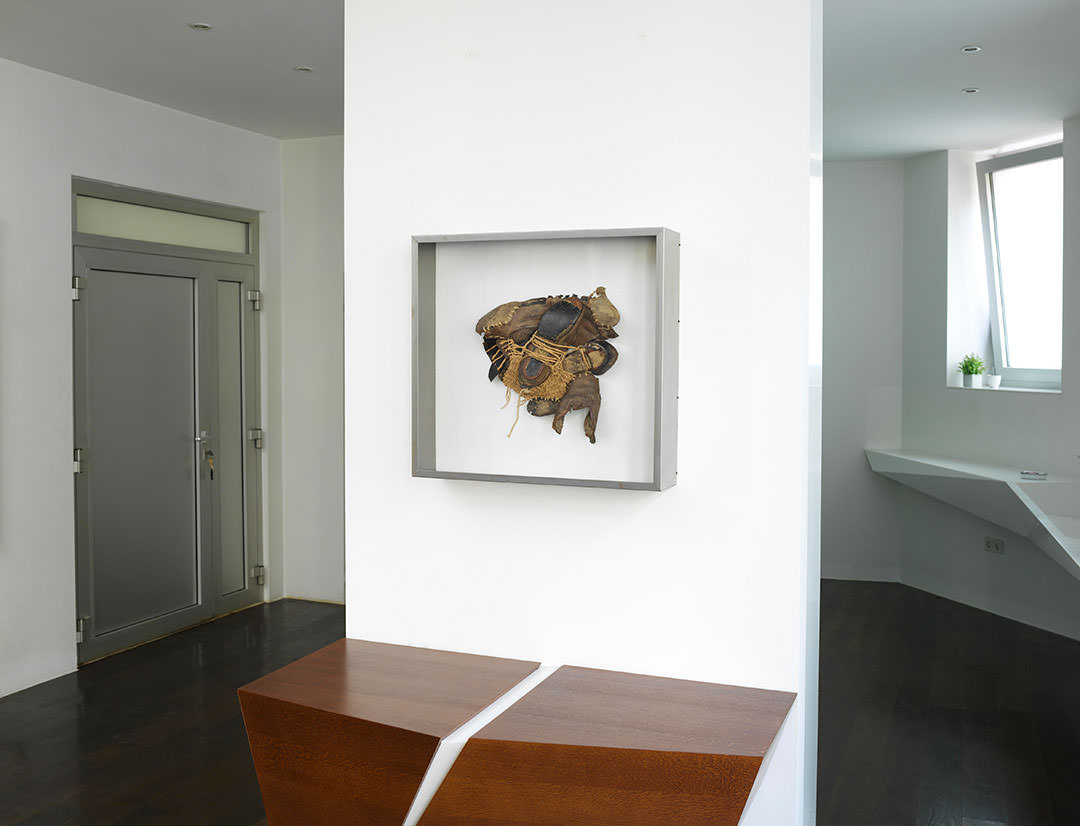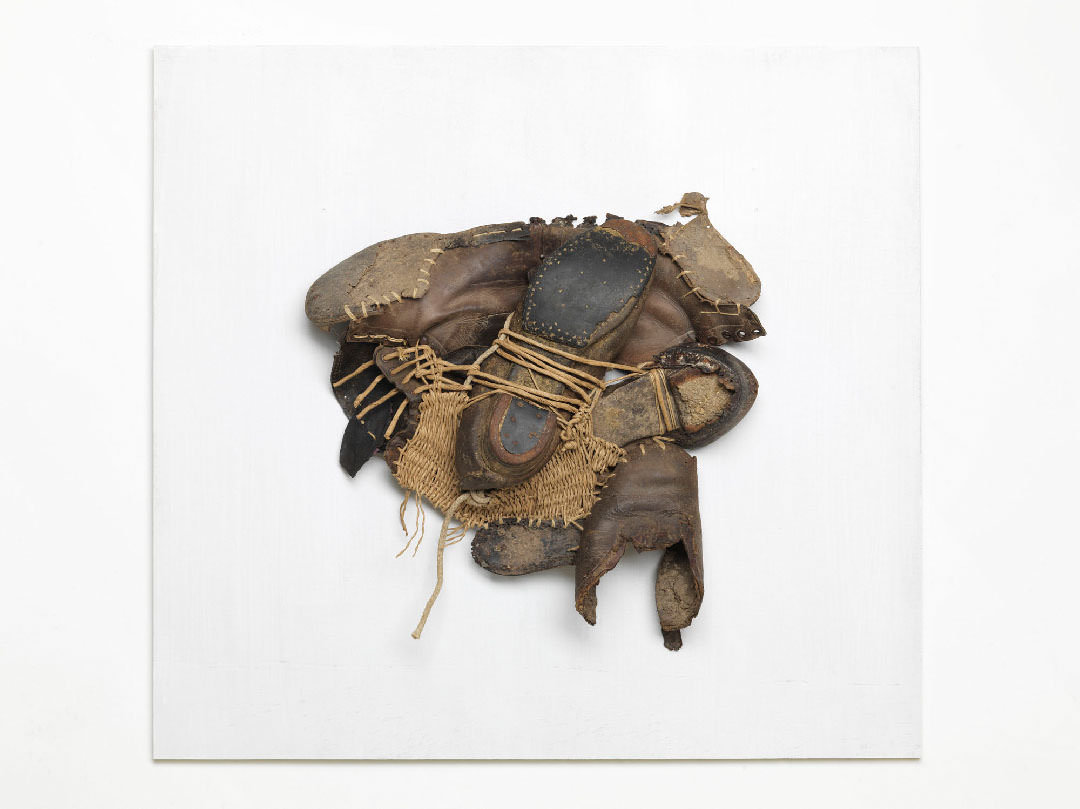REBUILDING: MOTHER AND FATHER
Dedicated to my mothers and fathers.
“Age: 50 years – being kept in the dark – outcome rage
Result – frustration by knowledge
Age: 10 years – insatiable curiosity – rage indignation
Result rage
Exclusion
Age:1 year – being abandoned – why are they abandoning me
Where are they
Age: 3 months – famished and forgotten
Age: 1 month – fear of death “
Louise Bourgeois „Destruction of the Father – Reconstruction of the Father”, Schriften und Interviews 1923-2000, (own translation, Alexandra Leisser)
Anita Steinwidder was born in 1973, as the second child of her biological mother and the third child of her biological father. At the age of three, she was adopted by her paternal grandparents. Henceforth, the grandfather became the adoptive father and the grandmother the adoptive mother. From a legal perspective, the biological father was now her brother. Once the adoption came into force, the biological parents no longer provided for the child or fulfilled any parenting functions. They became opaque characters. In the custody of her adoptive parents, the girl grows up in a small town in the countryside. Her childhood is characterized by nature, her vicinity and affinity to animals, and the freedom that comes with growing up in such rural environments.
Already early on in life, the child becomes preoccupied with its origin. Always having been aware of the circumstance of her adoption, the question of her identity is of central importance. Who am I? What did I genetically inherit from my biological parents? (looks, talent, weaknesses, physical characteristics and deficiencies) And how has the parenting by my adoptive parents shaped me, meaning, which character traits of mine may be based on them having raised me?
“You can’t understand someone until you’ve walked a mile in their shoes.” Indian proverb
“We only had one pair of shoes.” This sentence speaks volumes about a generation, that witnessed the war at a young age: the post-war era and its deprivation; a life of hard labour and poverty; large and extended families (the grandmother was one of 12 children); always saving food, never wasting it, let alone throwing it away. Clothes were mended and re-worn until the original garment was completely raddled. Gratitude, humility, repentance. Catholicism and bigotry, a prudish handling of topics such as sexuality and physicality.
The child grows up with this socio-cultural imprint.
Today, the grown-up woman chose 6 examples to depict her view on the historic figures of mother and father in abstract objects. 3 pairs of shoes – 3 pairs of female shoes and 3 pairs of male shoes, all relics of the past – are used as source material for each of the objects, which are all encased in box frames.
Recurring characteristics in the working method of the artist:
THE FRAGEMENTATION of objects into smaller pieces in order to rearrange them anew. Eventually they are reassembled to three dimensional objects or plastic arts.
THE WEAVE, a component also common in other works of STEINWIDDER, forms the basic construction and binds together the single elements.
THE SEAM, composed of stich by stich into materials that are often hard to work, in this case leather, which is decades old, is painful – especially in its repetitions, as is the weave – therapy.
THE ENTANGLED THREADS are what they are. They are unsortable, yet, will be arranged into a certain shape or form.
THE TRACES OF USAGE and the dirt will always remain visible. They are witnesses to time, to experiences, and to the wearer’s use of his/her things. These traces are the source of inspiration and the poetry in the works of STEINWIDDER.
THE REPITION is meditative and therapy.
- Idea, concept and realization: STEINWIDDER, 2020
- Photos: Klaus Fritsch
- Text: Anita Steinwidder, editing: Erika Eisenhut
- Translation: Alexandra Leisser



Always working – never resting.
One pair of historical female shoes; cords and yarns made of natural fibers and paper; nails; wooden board; paint; glazed and framed in custom-built metal showcase;
70 cm × 65 cm × 15 cm
Artwork: sold; prints: available



Balancing on a narrow promontory in a slightly inclined position.
One pair of historical female shoes; cords and yarns made of natural fibers and paper; nails; wooden board; paint; glazed and framed in custom-built metal showcase;
50 cm × 65 cm × 15 cm
Artwork and prints: available



Introverted and secluded from the outside, she guards the nest, protected by thin threads.
One pair of historical female shoes; cords and yarns made of natural fibers and paper; ribbon; nails; wooden board; paint; glazed and framed in custom-built metal showcase;
50 cm × 65 cm × 15 cm
Artwork and prints: available



With an embracing gesture he provides for and protects the family.
One pair of historical male shoes; cords and yarns made of natural fibers and paper; nails; wooden board; paint; glazed and framed in custom-built metal showcase;
70 cm × 65 cm × 15 cm
Artwork: sold; prints: available



He is an eloquent person with strong numeric skills. An impressive looking man in his Sunday suit, decorated with his orders of merit.
One pair of historical male shoes; cords and yarns made of natural fibers and paper; nails; wooden board; paint; glazed and framed in custom-built metal showcase;
70 cm × 65 cm × 15 cm
Artwork and prints: available



He, who will ride a bull while roguishly sticking out his tongue.
One pair of historical male shoes; cords and yarns made of natural fibers and paper; nails; wooden board; paint; glazed and framed in custom-built metal showcase;
70 cm × 65cm × 15 cm
Artwork and prints: available